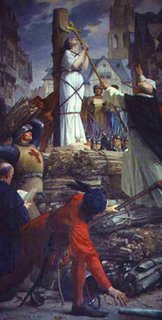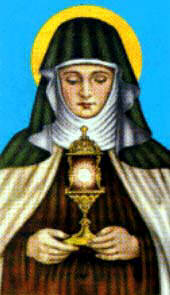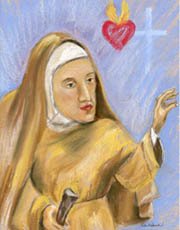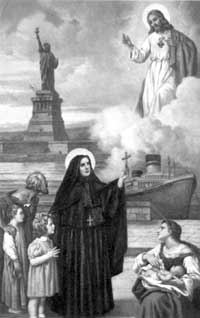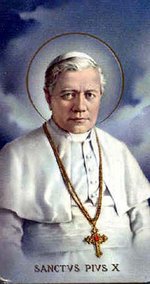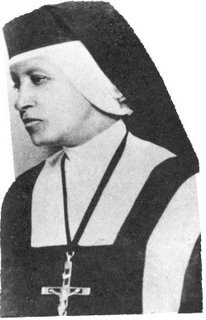
Mother Mary of St. Joseph was born in Choroni, Venezuela, on 25 April 1875, and received the name Laura Evangelista at Baptism. From very early she displayed a very strong moral character. Her desire was to become a cloistered nun but there were no cloistered convents in Venezuela. The feast of the Immaculate Conception in 1888 was an unforgettable day for her: she received Jesus in Holy Communion for the first time and made a private vow of virginity, consecrating herself as a bride of Jesus Christ.
She began instructing poor children at home, supporting the project financially with her own labour. She took her parish priest in Maracay, Fr Vicente Lopez Aveledo, as a spiritual director and under his guidance made a vow of perpetual virginity. During 1893 smallpox epidemic in Maracay, she devoted herself to the care of the sick in the first hospital founded by her parish priest. The work was difficult, the poverty total, but nothing caused her to waver. She said: "My Jesus, the ideal I seek is you and you alone. Nothing frightens me. I want to be a saint, but a true saint". This became the motivation of her entire life. Her example encouraged other young women to offer their services and in 1896 she was appointed Directress of the hospital. Her dream to found an institute dedicated to the care of orphans and the aged became a reality with the help of Father Vincente and the permission of the Vicar General of Caracas, Msgr Juan Castro.
In February 1901 she and Fr Lopez Aveledo founded a congregation of sisters for the assistance and care of the sick, the elderly and orphans, called the Augustinian Recollects of the Heart of Jesus. In 1902 Laura confirmed the vow of virginity she had made at 17. On 13 September 1903, by a special privilege granted to her by the Holy See as the foundress of the community, she made her perpetual vows of chastity, poverty and obedience, changing her name from Laura to Maria of St Joseph.
Consumed by her love for God and possessing a great capacity to sacrifice, charity and humility she founded 37 homes for the elderly and orphans as well as hospitals in La Victoria, Villa de Cura, Coro, Calabozo, Ocumare del Tuy, Barquisimeto, Los Teques, San Felipe, Puerto Cabello, Caracas and Valencia. Many towns and cities experienced the boundless love of Mother Maria and her daughters. She said: "Those rejected by everyone are ours; those no one wants to take are ours".
Her life was a union of deep contemplation and intense activity for others. She identified with Mary's love for the Eucharist and spent many hours at night before the tabernacle in intimate conversation with Jesus. Her whole life was to be illuminated by the Divine Son, the Eucharistic presence of her Beloved. From Him she received her joy, peace and consolation for her soul, always hungry for this infinite God, made into a man turned to bread to be loved by mankind. The Eucharist is “sacrament-sacrifice”, ‘sacrament-communion” and “sacrament-presence”. In the soul that receives it, it becomes the word and the life, and in a fraternal community, it produces and signifies the unity of the Spirit. She loved the Sacramental Jesus, she imprinted in her on life the character of the Holy Host, love, sacrifice, humility, adoration and silence.
Motivated by this love, she made hosts with her own hands and distributed them freely to parishes, a work she recommended to her daughters which they still do and distribute at no cost.
After a long illness, which she bore with great strength of soul, she died in the odour of sanctity in Maracay on 2 April 1967, at the age of 92. As she had requested, she was buried in the chapel of the Immaculate Conception Home in Maracay at the foot of the altar with a purple flower and to white lilies in her hand.
On January 19, 1994, during the process of her beatification her body was exhumed. Although the coffin was completely destroyed, her body and religious habit were perfectly preserved as well as the crucifix and branch of lilies, the lilies and branches which are still fresh and green to this day.
To this faithful servant, who made of her mortal body a temple, God granted the gift of preserving her body incorrupt. It lies presently in a glass coffin, testimony to the holiness to which she aspired as well as a tangible sign of the love of God for us.
Mother Mary of St. Joseph was beatified by Pope John Paul II in Rome on May 7, 1995.
Quotes from Blessed Mother Mary of St. Joseph
Let us be good expecting no reward. It shall be given in Heaven.
As a pure Host, I want to immolate myself and for tour of love, offer myself in sacrifice every instant, my Lord.
The Eucharist and Calvary are our life. The cross in religious life is sweet and soft. How sweet and soft it is for one to live in Calvary and the Sacracy. How beautiful it is to live embracing the Holy Tree, the dear word, to later be completely crucified in it, to turn our eyes to the Tabernacle! Oh how pleasurable and consoling this is! Oh bless You, Divine Eucharist!
Let me learn to love You greatly and to give my life for Eucharistic Love…. To love You, not with my lips, but by identifying myself with You, by being docile and humble, like Your Heart.
I wish to live and die singing the Magnificat.
As for myself I ask nothing but love and Heaven. Yes, my Jesus to possess You completely is all I want, nothing more.
